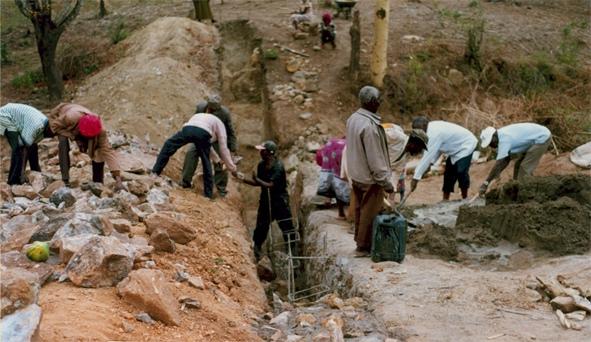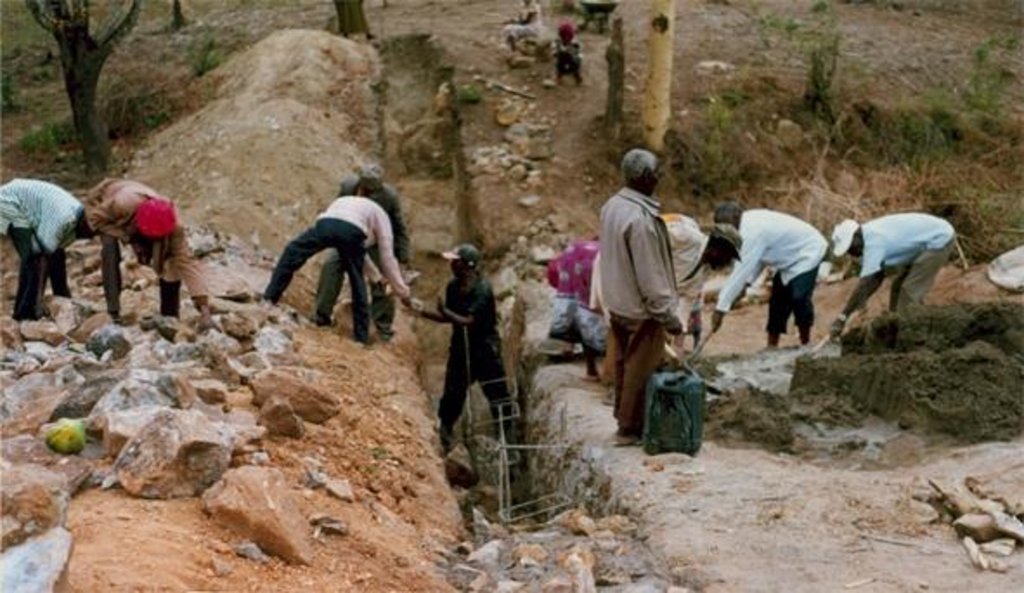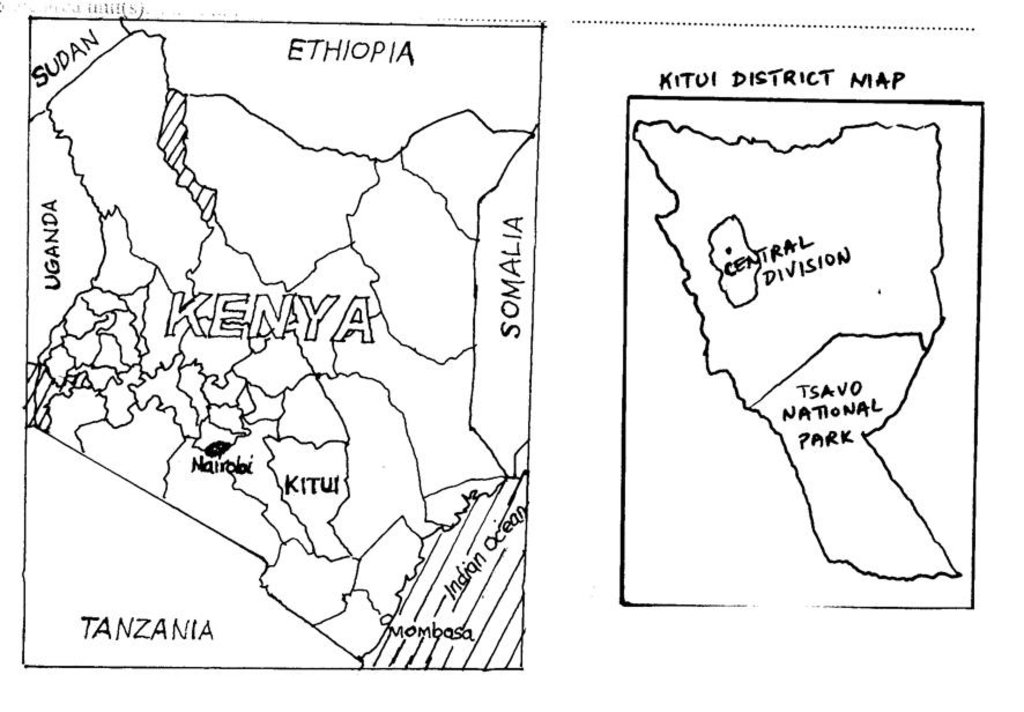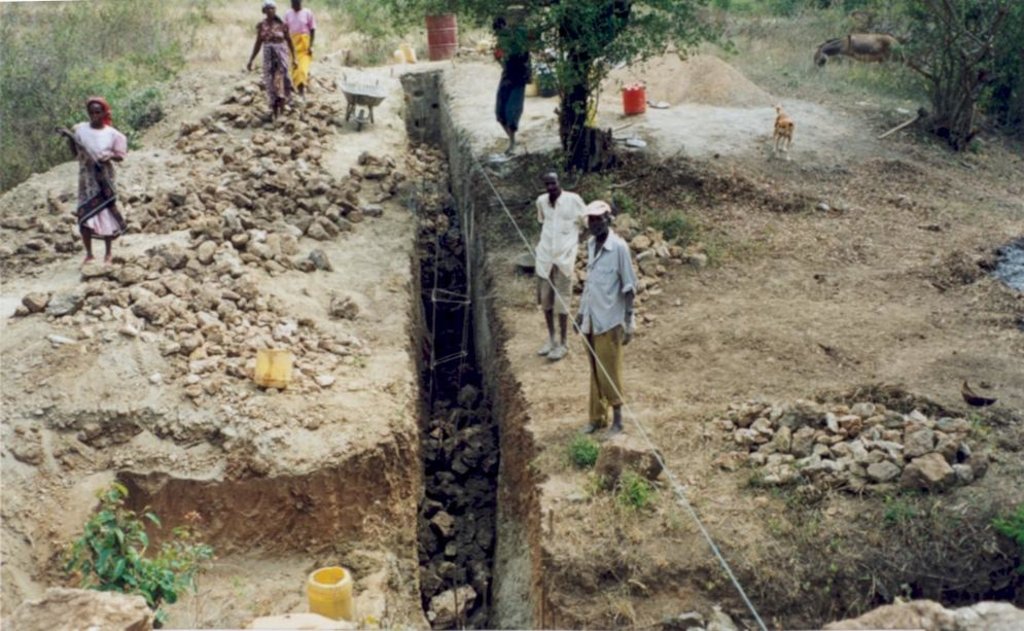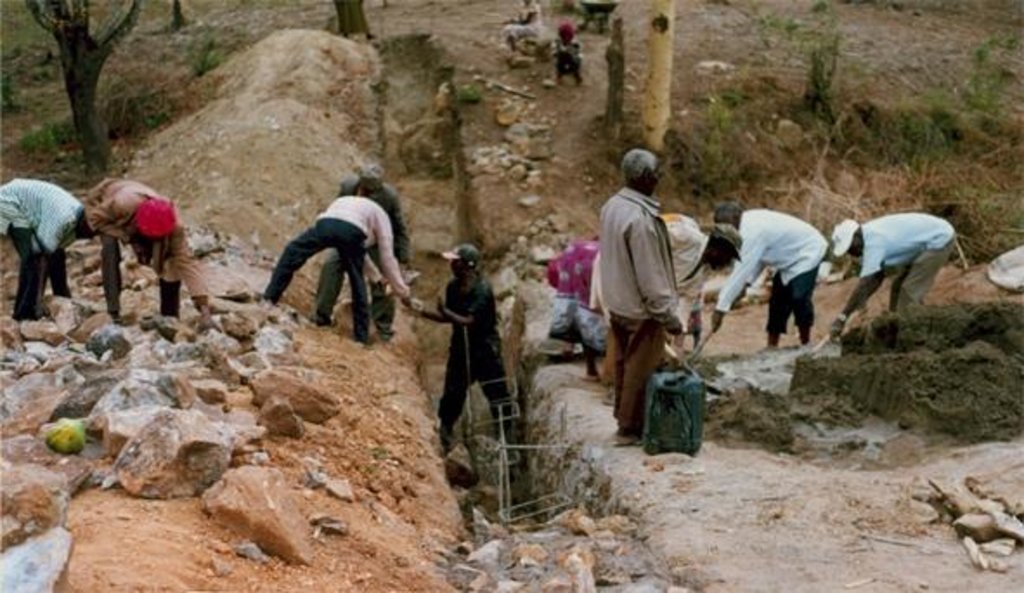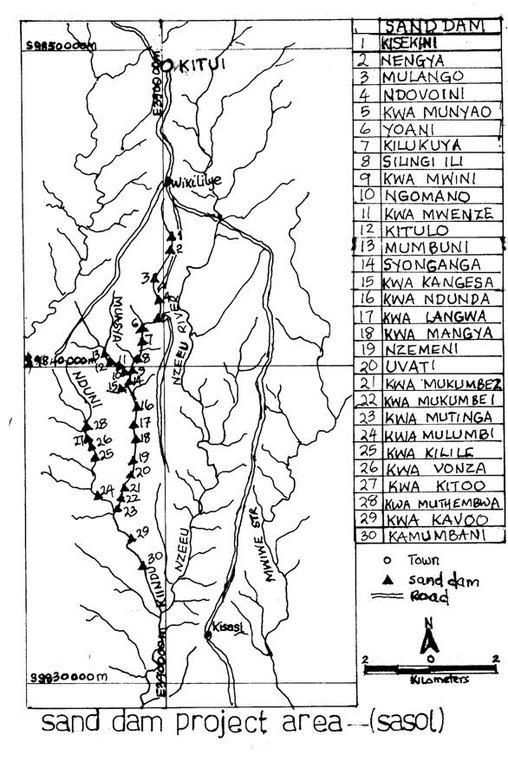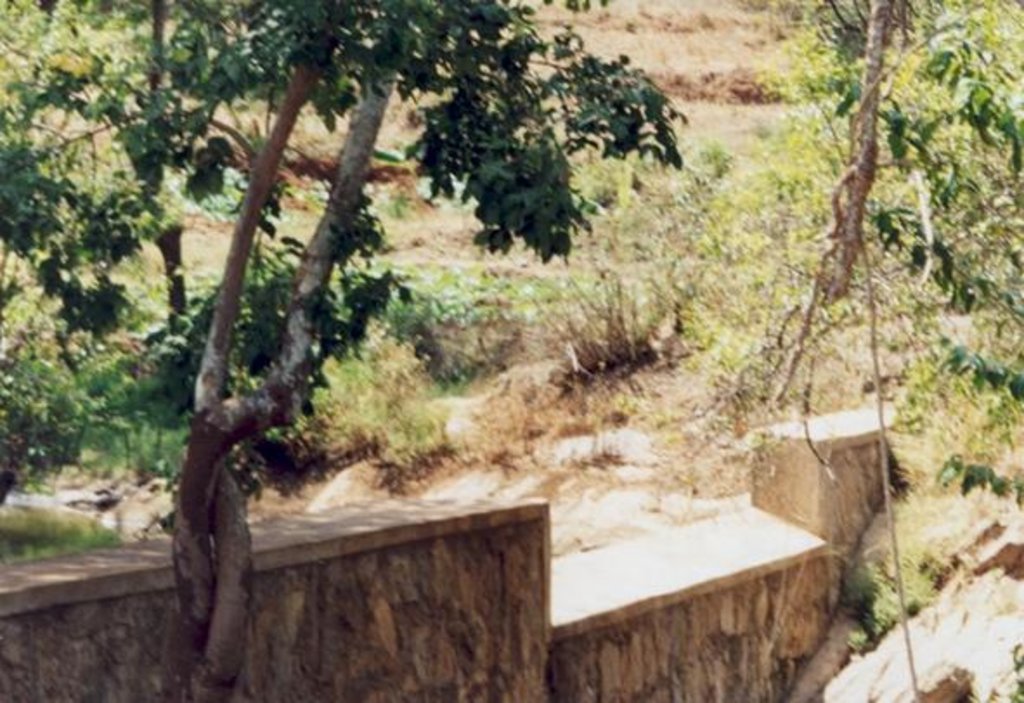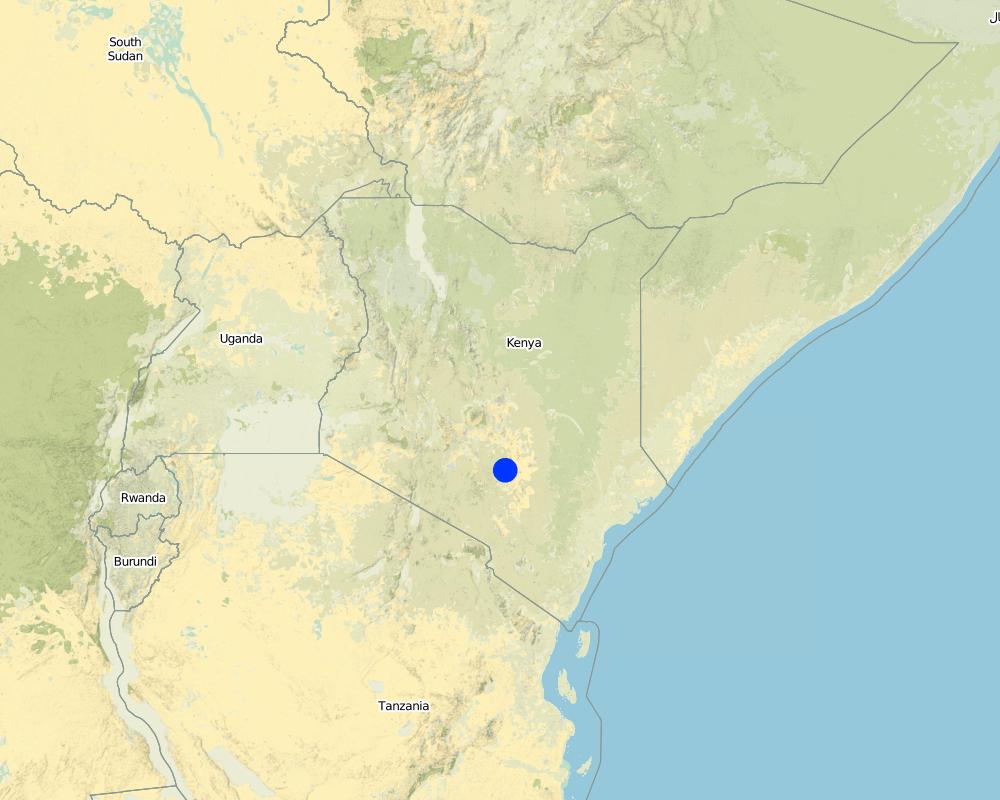SASOL community approach - for sand dams in Kitui [肯尼亚]
- 创建:
- 更新:
- 编制者: Donald B. Thomas
- 编辑者: –
- 审查者: Fabian Ottiger
approaches_2358 - 肯尼亚
查看章节
全部展开 全部收起1. 一般信息
1.2 参与方法评估和文件编制的资源人员和机构的联系方式
SLM专业人员:
Mutiso Sam
sasol@kenyaweb.com
SASOL Foundation
PO Box 85 Kitui Kenya
肯尼亚
有助于对方法进行记录/评估的机构名称(如相关)
Sahelian Solutions Foundation (SASOL) - 肯尼亚1.3 关于使用通过WOCAT记录的数据的条件
编制者和关键资源人员接受有关使用通过WOCAT记录数据的条件。:
是
1.4 SLM技术问卷的参考
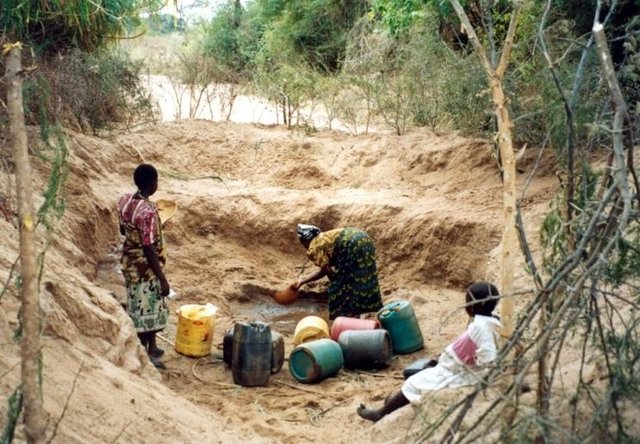
Kitui Sand dams [肯尼亚]
Masonry dam in seasonal watercourse or river that stores water in the sand which accumulates above it.
- 编制者: Unknown User
2. SLM方法的描述
2.1 该方法的简要说明
Community based water resource development
2.2 该方法的详细说明
该方法的详细说明:
Aims / objectives: Purpose is to harness the available water resource for common interests. Objective is to make water more accesible especially in the dry season.
Methods: Communities are mobilised through participation process. Local artisans are trained on the job wherease the community provide local materials and free labour voluntarily. Supporting NGOs facilitate the training and provide inputs eg cement, reinforcing bars, skilled labour. Community mobilisation is basic to SASOL's programme for water resource development. SASOL take advantage of existing structures and conforms to the government policy refferred to as District focus for Rural Development. Before communities can be mobilised, people, must be trained and SASOL has found that training can best be done at the local level. The role of the community is as follows: 1. To provide secondary data/information 2. Identify problems, resources and propose possible interventions or community action plan. 3. Election of a committee to take charge - custodial of all purchased materials. 4. Collection of local materials and provide labour. 5. Carry out impact assessment periodically
2.3 该方法的照片
2.5 采用该方法的国家/地区/地点
国家:
肯尼亚
区域/州/省:
Eastern
Map
×2.6 该方法的开始和终止日期
注明开始年份:
1995
2.7 方法的类型
- 基于项目/方案
2.8 该方法的主要目的/目标
The Approach focused mainly on SLM with other activities (tree nursery establishment, health and hygiene concerns of the community. (Community Trainings))
to build sand dams in all streams in a 200km2 part of Central Division of Kitui District.
The SLM Approach addressed the following problems: Lack of water especially in dry seasonPoor water hygiene and general public health.
2.9 推动或妨碍实施本办法所适用的技术的条件
财务资源和服务的可用性/可得性
- 阻碍
Lack of funds for cement
Treatment through the SLM Approach: SASOL raises the funds
机构设置
- 阻碍
Lack of community organization to address the prevailing problems
Treatment through the SLM Approach: participatory process to identify problems & solutions
了解SLM,获得技术支持
- 阻碍
Lack of trained artisans
Treatment through the SLM Approach: training of artisans
其他
- 阻碍
roads and access to river valleys
Treatment through the SLM Approach: improvement of roads
3. 相关利益相关者的参与和角色
3.1 该方法涉及的利益相关者及其职责
- 当地土地使用者/当地社区
Community village group (water users' group). Working land users were mainly women (most of the men are working outside the district.) Existing groups of land users; Working land users were mainly women (most of the men are working outside the district.)
More men working outside the district.
More women engaged in the daily activities as they are availanle. Sub-locational development committees and self help groups are mobilised for a community training that follows the approach of a PRA. The community selects from 25 to 50 trainnees, both men and women.
- 国家政府(规划者、决策者)
- 国际组织
Kenyan political scientist in collaboration with a Netherland hydrogeologist and an environmental planner
3.2 当地土地使用者/当地社区参与该方法的不同阶段
| 当地土地使用者/当地社区的参与 | 指定参与人员并描述活动 | |
|---|---|---|
| 启动/动机 | 互动 | Mainly:rapid/participatory rural appraisal; partly: workshops/seminars; PRA was carried out with the assistance of world neighbours |
| 计划 | 互动 | Mainly: rapid/participatory rural appraisal; partly: public meetings; participatory planning exercise |
| 实施 | 互动 | responsibility for major steps; collection of local materials labour water etc |
| 监测/评估 | 互动 | measurements/observations; community observation and comments |
| Research | 无 | water hygiene analysis |
3.4 有关SLM技术选择的决策
具体说明谁有权决定选择要实施的技术:
- 主要是土地使用者,由SLM专家提供支持
解释:
Consultative through participatory approaches.
Decisions on the method of implementing the SLM Technology were made by mainly by SLM specialists with consultation of land users. consultative
4. 技术支持、能力建设和知识管理
4.1 能力建设/培训
是否为土地使用者/其他利益相关者提供培训?:
是
明确受训人员:
- 土地使用者
- teachers, school children/students
培训形式:
- 在职
- 公开会议
- 课程
涵盖的主题:
through PRA and on the job
4.2 咨询服务
土地使用者有权使用咨询服务吗?:
是
说明/注释:
Name of method used for advisory service: Workshop trainning; Key elements: non residential workshops, Educational tours and visits; 1) Advisory service was carried out through: projects own extension structure and agents 2) Advisory service was carried out through: projects own extension structure and agents; Extension staff: specifically hired project employees 3) Target groups for extension: land users; Activities: SWC, Tree planting, water management
Advisory service is quite adequate to ensure the continuation of land conservation activities; community resource persons trained to make it sustainable.
4.3 机构强化(组织发展)
是否通过这种方法建立或加强了机构?:
- 是,适度
具体说明机构的强化或建立程度:
- 本地
- cooperative activity to solve water problem
4.4 监测和评估
监测和评估是该方法的一部分吗?:
是
注释:
bio-physical aspects were ad hoc monitored
technical aspects were regular monitored
economic / production aspects were ad hoc monitored by 0 through observations; indicators: None
no. of land users involved aspects were regular monitored by 0 through measurements; indicators: None
management of Approach aspects were ad hoc monitored by 0 through observations; indicators: None
There were few changes in the Approach as a result of monitoring and evaluation: construction of dam in one single phase as opposed to several phase due to difficulties In comminity mobilisation for subsequent phases. Commencement of construction from wing walls instead of the main structure. This is psycologically attractive to land users as they remain motivated to realise completion of the dam across the river/stream bed.
5. 融资和外部物质支持
5.1 该方法中SLM组成部分的年度预算
如果不知道准确的年度预算,请给出一个范围:
- 100,000-1,000,000
注释(例如主要的资助来源/主要捐助者):
Approach costs were met by the following donors: international (-): 50.0%; international non-government (-): 10.0%; local community / land user(s) (-): 40.0%
5.2 为土地使用者提供财政/物质支援
土地使用者是否获得实施该技术的财政/物质支持?:
是
如果是,请具体说明支持的类型、条件和提供者:
Provision of purchased inputs like cement.
5.3 对特定投入的补贴(包括劳动力)
- 设备
| 具体说明哪些投入得到了补贴 | 程度如何 | 对补贴做出具体说明 |
|---|---|---|
| 工具 | 充分融资 | |
- 建筑
| 具体说明哪些投入得到了补贴 | 程度如何 | 对补贴做出具体说明 |
|---|---|---|
| Cement and reinforced bars | 充分融资 | |
如果土地使用者的劳动力是一项重要的投入,那么是不是:
- 自愿
注释:
Provision of purchased inputs like cement.
5.4 信用
是否根据SLM活动的方法给予信用值?:
否
6. 影响分析和结论性陈述
6.1 方法的影响
该方法是否帮助土地使用者实施和维护SLM技术?:
- 否
- 是,很少
- 是,中等
- 是,支持力度很大
more tree nurseries, more vegetable growing, more time for terracing etc instead of treking for water
N/A
Did other land users / projects adopt the Approach?
- 否
- 是,很少
- 是,中等
- 是,支持力度很大
other groups using water as an entry point for development e.g. catholic diocese
6.3 方法活动的可持续性
土地使用者能否维持通过该方法实施的措施(无外部支持的情况下)?:
- 不确定
若否或不确定,请具体说明并予以注释:
Still need help for purchase of inputs especially cement and reinforced bars
6.4 该方法的长处/优点
| 土地使用者眼中的长处/优势/机会 |
|---|
| avail labour readily for demanding activities (How to sustain/ enhance this strength: engage groups in self help farm activities) |
| laggards are pulled along by innovators |
| communal identification of available resources and strngths |
| 编制者或其他关键资源人员认为的长处/优势/机会 |
|---|
| Participatory PRA creates awareness (How to sustain/ enhance this strength: through trainings) |
| empowers community (How to sustain/ enhance this strength: start income generating activities) |
| costs minimized through voluntary labour |
| self reliance strengthened |
| community empowered |
6.5 该方法的弱点/缺点以及克服它们的方法
| 土地使用者认为的弱点/缺点/风险 | 如何克服它们? |
|---|---|
| materials are too expensive for them to afford | local fund raising initiatives |
| 编制者或其他关键资源人员认为的弱点/缺点/风险 | 如何克服它们? |
|---|---|
| impact on river flow needs to be studied |
7. 参考和链接
7.1 方法/信息来源
- 实地考察、实地调查
- 与土地使用者的访谈
7.2 参考可用出版物
标题、作者、年份、ISBN:
Thomas, D.B. 1999'where there is no water.' A story of community water development & dand dams in Kitui District, Kenya
链接和模块
全部展开 全部收起链接

Kitui Sand dams [肯尼亚]
Masonry dam in seasonal watercourse or river that stores water in the sand which accumulates above it.
- 编制者: Unknown User
模块
无模块


